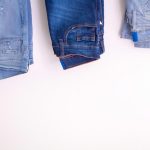When you consider the softness of Pima cotton, you might wonder what sets it apart from regular cotton. Its unique fiber structure, characterized by longer and finer strands, plays a crucial role in creating that luxurious feel. But it doesn't stop there; the cultivation and harvesting methods also significantly influence the final product's quality. As you explore the various factors that contribute to Pima cotton's exceptional softness, you may find some surprising insights that could change your perspective on textiles altogether.
Table of Contents
Unique Fiber Structure
Pima cotton's unique fiber structure gives it a silky texture that feels luxurious against your skin. Unlike regular cotton, the fibers of Pima cotton are longer and finer, resulting in a smoother, more durable fabric. When you wear Pima cotton, you'll notice how it drapes effortlessly and doesn't irritate your skin, making it perfect for all-day comfort.
The long fibers reduce the number of loose ends, which minimizes pilling and enhances the overall appearance of the fabric. You'll appreciate how this quality keeps your clothing looking new even after repeated washes. The finer threads also allow for a tighter weave, creating a stronger fabric that withstands wear and tear.
Additionally, Pima cotton's unique structure allows it to absorb dye more effectively, resulting in vibrant colors that last. When you choose Pima cotton, you're not just opting for softness; you're investing in a fabric that enhances both the feel and visual appeal of your garments.
You'll find that it retains its shape and elegance over time, making it a smart addition to your wardrobe. Whether it's shirts, sheets, or towels, Pima cotton elevates your everyday experience.
Genetic Origins of Pima Cotton
The genetic origins of Pima cotton trace back to the Peruvian variety of upland cotton, which was selectively bred for its superior qualities. This breeding process aimed to enhance the fiber's length, strength, and softness, resulting in a fabric that's not only luxurious but also durable. Today, Pima cotton is recognized for its exceptional characteristics, making it a favorite among manufacturers and consumers alike.
To better understand its origins, let's take a look at some key aspects of Pima cotton's genetic background:
| Aspect | Description |
|---|---|
| Parent Species | Peruvian upland cotton |
| Key Traits | Longer fibers, higher strength, softer feel |
| Breeding Purpose | To create a premium cotton variety |
These traits have been preserved and enhanced through generations of careful cultivation. By focusing on these superior qualities, breeders have ensured that Pima cotton remains an industry standard for high-quality textiles. You'll appreciate how its genetic foundation contributes to the softness and overall appeal of the fabric in your wardrobe.
Cultivation and Harvesting Methods
Typically, farmers employ meticulous cultivation and harvesting methods to ensure Pima cotton reaches its full potential. These practices contribute significantly to the cotton's renowned softness and quality. You'll find that attention to detail during each phase is crucial.
Here are four key methods used in the cultivation and harvesting of Pima cotton:
- Soil Preparation: Farmers start with high-quality soil, often enriched with organic matter to support healthy plant growth. They test pH levels and nutrient content to optimize conditions.
- Water Management: Irrigation is carefully controlled to prevent overwatering, which can harm the delicate fibers. Farmers often use drip irrigation systems for precision.
- Pest Control: Integrated pest management techniques are employed to minimize chemical use. This includes introducing beneficial insects and using natural repellents to protect the crop.
- Hand Harvesting: For the best quality, many farmers handpick Pima cotton. This method reduces damage to the fibers and ensures only the finest bolls are collected.
Comparison With Regular Cotton
When you compare Pima cotton to regular cotton, you'll notice some key differences in fiber structure.
These differences affect not just the feel of the fabric but also how well it absorbs moisture.
Understanding these points can help you appreciate why Pima cotton stands out in quality and comfort.
Fiber Structure Differences
Pima cotton often boasts a longer fiber length compared to regular cotton, contributing to its superior softness and durability.
This extended fiber length means fewer fiber ends are exposed, which reduces the scratchy feel often associated with shorter cotton fibers. When you touch Pima cotton, you'll notice a smoothness that's hard to replicate with regular cotton.
Here are some key differences in fiber structure between Pima cotton and regular cotton:
- Length: Pima cotton fibers can be up to 1.5 inches long, while regular cotton fibers typically measure around 0.75 inches.
- Strength: The longer fibers of Pima cotton provide enhanced strength, making the fabric more resistant to fraying and fading.
- Smoothness: The finer texture of Pima cotton fibers results in a softer, more luxurious feel against your skin.
- Durability: With a more robust fiber structure, Pima cotton fabrics maintain their quality after multiple washes, making them a smart investment.
These fiber structure differences are what set Pima cotton apart, resulting in a fabric that feels great and lasts longer.
Moisture Absorption Capability
Moisture absorption in Pima cotton surpasses that of regular cotton, making it an excellent choice for keeping you dry and comfortable. This enhanced capability comes from the longer fibers found in Pima cotton, which create a more efficient moisture-wicking effect.
When you wear Pima cotton, you'll notice that it draws sweat away from your skin quickly, helping to regulate your body temperature. In contrast, regular cotton tends to retain moisture, leaving you feeling damp and uncomfortable. This can be particularly bothersome during hot weather or intense physical activities.
With Pima cotton, the fibers allow for better air circulation, ensuring that moisture evaporates swiftly. You'll appreciate how Pima cotton's superior moisture absorption keeps you feeling fresh throughout the day. Whether you're lounging at home or out and about, this fabric helps maintain your comfort level, even in humid conditions.
Environmental Factors Influencing Softness
Environmental factors like temperature and humidity play a crucial role in determining the softness of cotton fibers. When you consider Pima cotton, it's essential to understand how these elements interact with the plant during its growth cycle. Higher humidity levels help the fibers retain moisture, leading to a softer texture. Conversely, extremely dry conditions can cause the fibers to become brittle and less pliable.
Here are four key environmental factors that influence the softness of Pima cotton:
- Temperature: Warmer temperatures during the growing season encourage better fiber development, enhancing softness.
- Humidity: Optimal humidity levels help maintain moisture in the fibers, contributing to a smoother feel.
- Soil Quality: Nutrient-rich soil supports healthier plants, resulting in superior fiber quality and softness.
- Sunlight Exposure: Adequate sunlight helps in the photosynthesis process, which is vital for strong, soft fibers.
Processing Techniques and Their Impact
Processing techniques significantly influence the final softness of cotton, shaping how the fibers feel against your skin.
For Pima cotton, the journey begins with careful harvesting. Unlike conventional methods, hand-picking minimizes damage to the fibers, preserving their long, silky structure.
Once harvested, the fibers undergo a meticulous ginning process. This step separates the cotton fibers from the seeds without compromising their integrity. The gentler the ginning, the softer the final product.
After ginning, the fibers are cleaned and combed, removing impurities and aligning the fibers for spinning. This alignment enhances the softness and smoothness of the yarn.
Spinning techniques also play a crucial role. Ring spinning, for example, creates a finer, softer yarn compared to other methods.
After spinning, the fabric is often subjected to finishing processes like mercerization, which further enhances its softness and luster by treating the fibers with sodium hydroxide.
These processing techniques collectively result in the luxurious feel of Pima cotton, ensuring you enjoy the ultimate comfort in your textiles.
Benefits of Pima Cotton in Textiles
The superior softness of Pima cotton not only makes it a pleasure to wear but also offers a range of benefits that enhance your textile experience. When you choose Pima cotton, you're opting for quality that translates into comfort and durability.
Here are four key benefits:
- Enhanced Durability: Pima cotton fibers are longer and stronger than regular cotton, making them resistant to fraying, fading, and wear. This means your clothes last longer, saving you money in the long run.
- Breathability: The natural fibers of Pima cotton allow for excellent airflow. You'll stay cool and comfortable, especially in warm weather, reducing the likelihood of overheating.
- Hypoallergenic Properties: Pima cotton is less likely to irritate your skin compared to synthetic fabrics. If you have sensitive skin, this fabric is a great choice for you.
- Vibrant Color Retention: Because of its smooth fibers, Pima cotton holds dye exceptionally well, resulting in vibrant, long-lasting colors that won't fade after a few washes.
Choosing Pima cotton elevates your textile experience, ensuring comfort, longevity, and style.
Frequently Asked Questions
How Does Pima Cotton Compare to Other Luxury Fabrics?
When you compare Pima cotton to other luxury fabrics, you'll notice it's incredibly soft and durable. It outlasts many alternatives, making it an excellent choice for those seeking comfort and quality in their textiles.
Is Pima Cotton Hypoallergenic?
Yes, Pima cotton's naturally smooth fibers make it less likely to irritate your skin, so it's often considered hypoallergenic. You'll find it's a great choice if you have sensitive skin or allergies.
Can Pima Cotton Be Machine Washed?
Yes, you can machine wash Pima cotton. Just use a gentle cycle with cold water and mild detergent. Avoid bleach and high heat in the dryer to keep your fabric looking its best for longer.
What Colors Are Available for Pima Cotton Fabrics?
Pima cotton fabrics come in a variety of colors, including classic whites, vibrant blues, rich reds, and soft pastels. You'll find options for every style, making it easy to match your decor or wardrobe preferences.
Does Pima Cotton Require Special Care During Washing?
Yes, Pima cotton does require special care during washing. You should wash it in cold water, use a gentle cycle, and avoid bleach. Line drying or low-heat drying helps maintain its softness and quality longer.
- Jaclyn Smith Fabric Coconut: a Review of This Rayon/Polyester Blend - June 29, 2025
- Jaclyn Smith Fabric Coconut: a Review of This Rayon/Polyester Blend - June 29, 2025
- How to Get Coconut Oil off Fabric Without Washing - June 29, 2025







